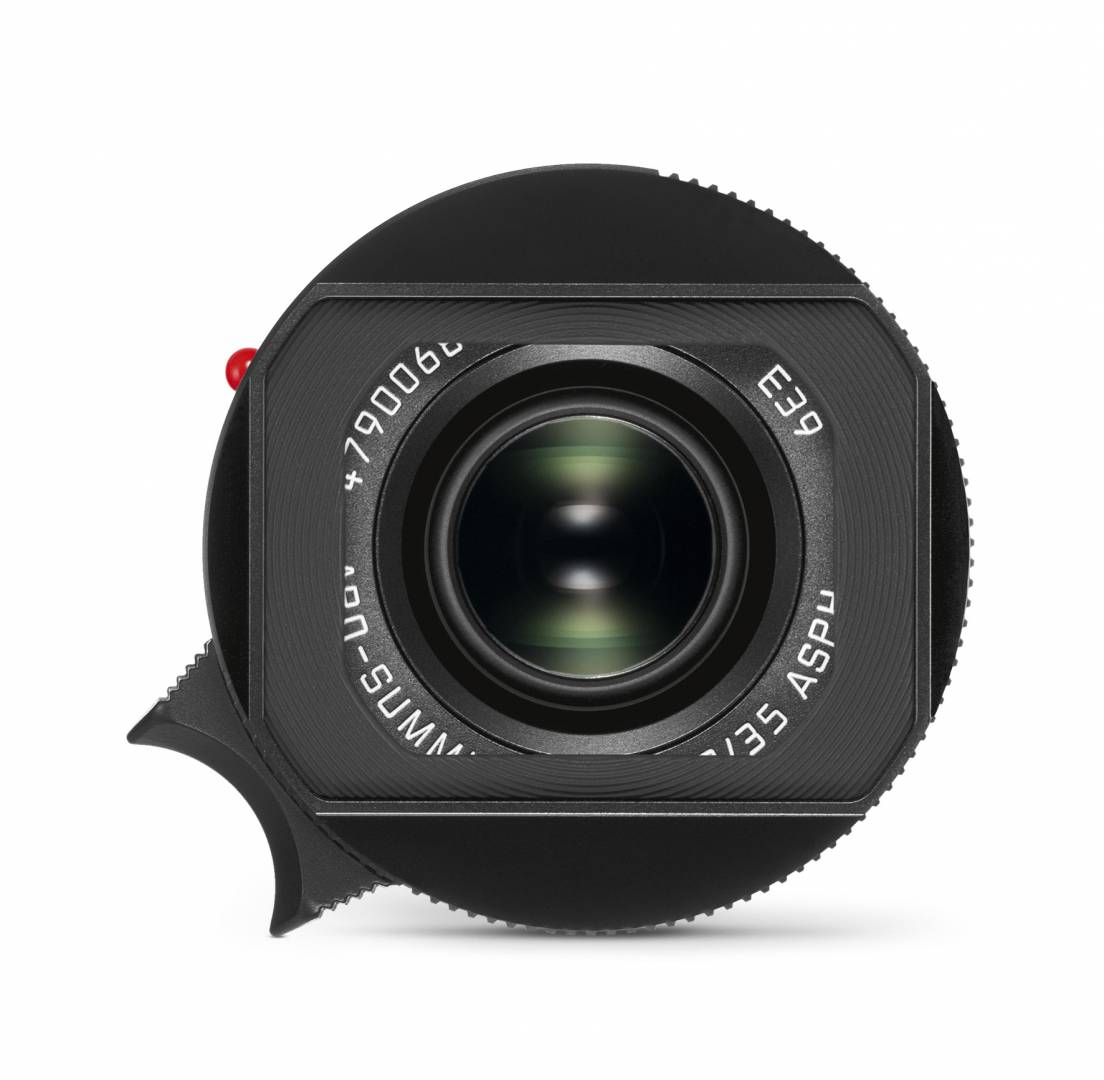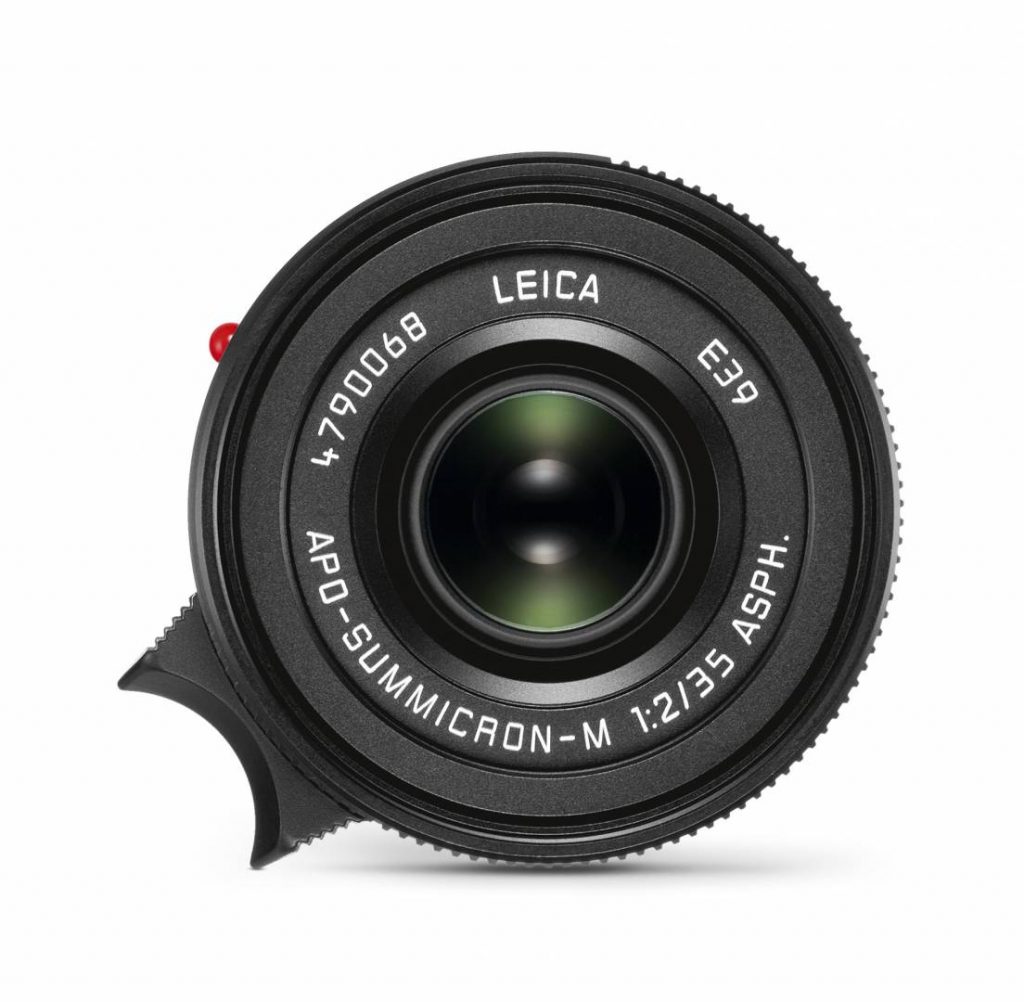Nine years after the introduction of arguably Leica’s finest M lens, the successful APO Summicron-M 50 f/2, the company has extended the goodness to the popular 35mm focal length. The new lens has the potential to be Leica’s best-ever M optic. The APO-Summicron-M 35 f/2 s on sale from today at a cost of £6,700, including tax.
The lens features three aspherical surfaces and special glass materials to achieve apochromatic correction. According to Leica, it offers the highest possible image performance in a very compact housing. Remarkably, for an M lens, the close focus distance is only 30cm compared with the 70cm, near-universal for M lenses (with one or two exceptions). I shall be interested in exploring this because I assumed that the limitations of the rangefinder mechanism determined the 70cm distance. In any event, this is a compelling additional reason to prefer this lens over the standard Summicron, despite the £4,000 premium.
A full review of this lens by Jonathan Slack will follow tomorrow. See Leica’s press release below for full technical details of the lens.
The ambience of the 35mm APO
Sample photos by Huw John
PRESS RELEASE
Maximum performance in a compact lens: the APO-Summicron-M 35 f/2 ASPH. sets new benchmarks
Wetzlar, 4th March 2021. Leica Camera is delighted to launch its most compact 35mm lens yet, the APO-Summicron-M 35 f/2 ASPH. This new addition to the range of M-lenses is the only one with a closest focusing distance of just 30 centimetres, which, in conjunction with the high light sensitivity, offers a host of new photography options and guarantees outstanding image results.
The designers of the APO-Summicron-M 35 f/2 ASPH. were given just one brief: to create a maximum imaging performance lens with a moderate wide-angle focal length of 35mm. This exceptional performance capability is made possible by the elaborate lens design, combined with the high-precision manufacturing processes at the Leica production plant. The ten lens elements are divided into five groups; three elements feature aspherical surfaces (one of them on both sides). Six elements are made of glasses with anomalous partial dispersion, which not only reduce chromatic aberrations to almost zero but also provide apochromatic correction, a quality that is rarely found in lenses of this focal length. The result is a lens whose sharp detail rendition will challenge not just current but also future image sensors.
The APO-Summicron-M 35 f/2 ASPH. delivers particularly outstanding results at close range due to the focus ring with its large throw of 300°, enabling precise focusing at all times despite the extended closest focusing distance. Via the rangefinder, the lens can be focused at a distance as close as 70cm – at which point a slight resistance can be felt on the focus ring. At distances between 70cm and 30cm, the photographer can optionally focus via the camera’s display screen in Live View mode, the Visoflex electronic viewfinder or the Leica FOTOS app.
The innovative construction of the lens hood, in combination with highly effective anti-reflective coatings, makes the APO-Summicron-M 35 f/2 ASPH. extremely resistant to any type of stray light – allowing the photographer to shoot into the sun or other sources of light. Optical flaws such as chromatic aberration and distortion are almost entirely corrected. This, together with the extremely high, edge-to-edge contrast rendition, facilitates an especially pronounced bokeh at open aperture. As the aperture is almost circular (thanks to the use of eleven blades), this effect is also retained when the lens is stopped down.
Even more than any other M-lens, the APO-Summicron-M 35 f/2 ASPH. only has to be stopped down for compositional purposes – never for exposure control as the rendition quality at the centre and edges of the image is already outstanding. Despite its exceptional performance, the APO-Summicron-M 35 f/2 ASPH. is both compact and lightweight. With its classic reportage focal length, this is a lens for every photographic situation that can be used on any current and future model of the M series, Leica SL2 and SL2-S.
The Leica APO-Summicron-M 35 f/2 ASPH. is available now at the Leica retail stores (book your virtual appointment here) or online at store.leica-camera.com/uk; you can download high-res imagery here.
RRP: £6,700
About Leica Camera
Leica stands for craftsmanship, design and experience. With over 100 years of history, the brand represents a beautiful combination of art and engineering with the future of form and functionality. Based in Wetzlar, the original birthplace of Leica, the German company is an internationally operating, premium-segment manufacturer of cameras and sport optics products. Leica’s legendary status is founded on its long tradition of excellence and supreme quality found in their cameras and lenses. Leica are committed to supporting the creation and preservation of iconic photography, past, present and future and the artists behind them.
For more information about Leica visit uk.leica-camera.com or follow the company on social media.
Join the Macfilos subscriber mailing list
Our thrice-a-week email service has been polished up and improved. Why not subscribe, using the button below to add yourself to the mailing list? You will never miss a Macfilos post again. Emails are sent on Mondays, Wednesdays, and Fridays at 8 pm GMT. Macfilos is a non-commercial site and your address will be used only for communications from the editorial team. We will never sell or allow third parties to use the list. Furthermore, you can unsubscribe at any time simply by clicking a button on any email.

























The clarity and pop reminds me of the Zeiss 35/1.4 zm lens. Of course that is a bigger lens but also brighter.
I would really like to get this one, but as a night owl who likes older bodies (M9M and M-D 262) and who still shoots film, the extra stop of the FLE is still worth more than the extra awesomeness of the APO.
Does the 0.3m MFD mean that there might be a non-rangefinder, EVF M camera coming out sometime soon?
An interesting point. As I understand it, the rangefinder distance remains at 70cm but 30cm kicks in when using an EVF or LCD — or when using a non-rangefinder camera such as the SL or a Panasonic. So there could be something in your suggestion. Mike
Ha ha.. I should stop going on about it really about evf.. but all this .. the high Def sensor in m10r, the close focus of 35mm points to that.
Hank (and Mahesh and Mike)
As Mike has it – rangefinder down to 0.7m then EVF
As for hints for the future, I think that they put this feature in (because it’s useful on an M) but more because lots of people are using M lenses on SL cameras, and here the close focus is both useful and seamless.
So I wouldn’t get your hope up about EVF M mount anytime soon! (though of course, I’m only guessing!)
Close focus ..only with an EVF or rear screen?
Just add the 90mm-macro close-focusing collar (..the old, ‘discontinued’ one ..or even the new one without ‘goggles’ works, too..) and then put your (..any..) lens on it upside-down, and what’ve you got? Close focus! (My 50mm APO works down to just under 9 inches – instead of minimally two-and-a-bit feet – with the old macro adaptor.)
You don’t even need to fit lenses upside-down on the newer Macro-Adapter-M ..to quote Leica:
“As the Macro-Adapter-M is also compatible with other M lenses, it offers Leica M photographers an even wider range of opportunities for creative composition and additional variety in reportage portfolios. With Leica lenses from 50 mm and greater, it enables macro exposures up to a reproduction ratio of 1:2 and, with wide-angle lenses, even larger ratios. The lens-to-subject distance decreases with decreasing focal lengths. The use of the adapter with 28, 35 or 50 mm lenses creates fascinating effects. The short distance from the subject creates extremely distorted perspectives and highly selective sharpness. Because, in contrast to a macro lens design, the imaging performance of these lenses is not optimised for such close focusing distances, it is advisable to stop them down by one or two aperture values. The use of the Macro-Adapter-M with lenses with focal lengths of less than 28 mm is not recommended, as the lens-to-subject distance must be extremely short to allow correct focusing.”
Works for me, at a bit less than, er, £6,700..!
Not listening (or reading) la la la la.
Damnit. I want one.
Me too, but I can’t justify the expense!
Can always live in the Tesla. I might have to move in with you if I purchase one too!
Two Mike’s in a Tesla with APO lenses sounds like a good you tube channel to me!
Yes I’m sure we would have a ton of subscribers. I note that I can sleep in the Tesla with Camping Mode turned on. Or I could even use Pet Mode. But with two APO 35s, we would definitely need Sentry Mode.
I wonder how it will compare to the newly released Voigtlander APO Lanther 35/2 which I can afford.
Brian
I think that Sean Reid is doing a comparison at some point.
best
Jono
You are correct as usual. I just saw that on his email. I need a 35mm m lens but it is not a core focal length for me so unless something silly comes up the Lanthar will be for me.
By the way, I always enjoy your reviews and appreciated your advice sometime back. Your images are sublime and you make monochrome sing!
I hope you get out that neglected 28/5.6 as it is worthy of you. I sold my awesome Leica 28/1.4 as I always picked the 28/5.6 for its gorgeous rendering and I really did not need a fast 28/1.4.
Can you convince Leica that a new state of the art CCD sensor camera would be appreciated by all those photographers that appreciated Kodachrome 25?
Hi Brian
I must get my 28 f5.6 out . . . . . really must.
As for the CCD – I still absolutely believe that it’s not the fact of the CCD, it’s the processing / lack of dynamic range / funky colours that makes the M9 so great (don’t deny it is). Just like Kodachrome25 really 🙂
But I do have an idea . . . . . . . .
An idea? That sounds dangerous.
Oh, if your 28/5.6 is feeling neglected I’d be happy to play with it for a while. Wouldn’t want it to get lonely.